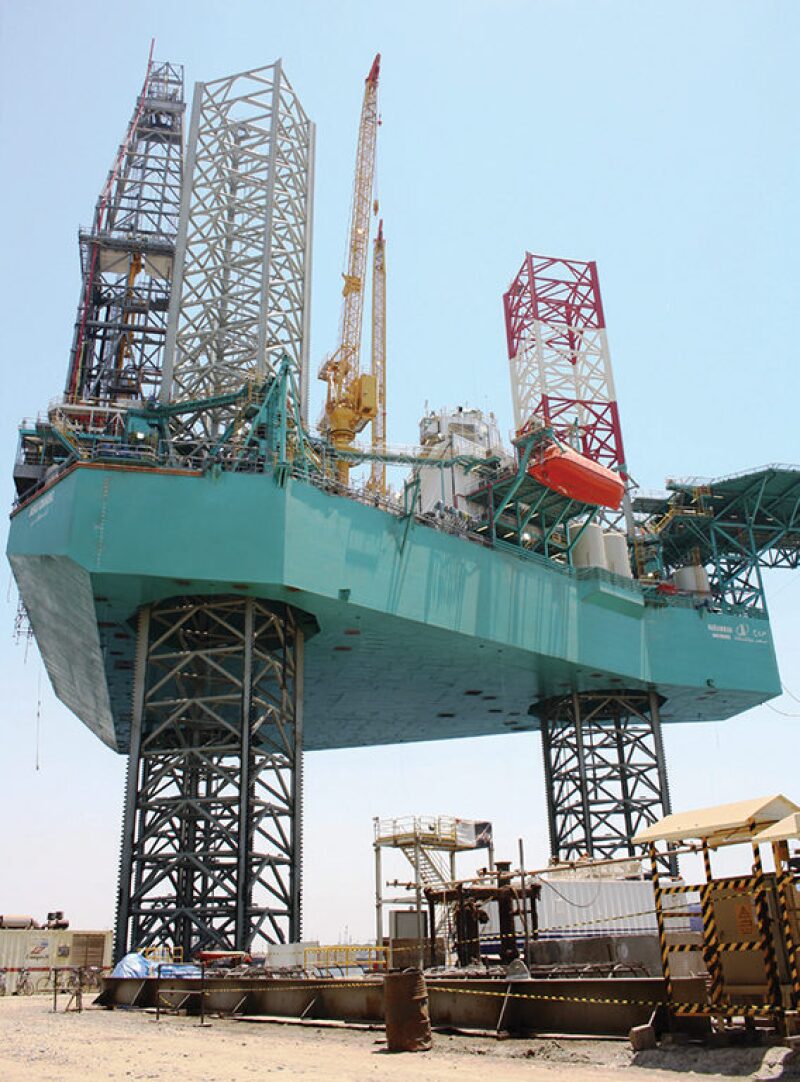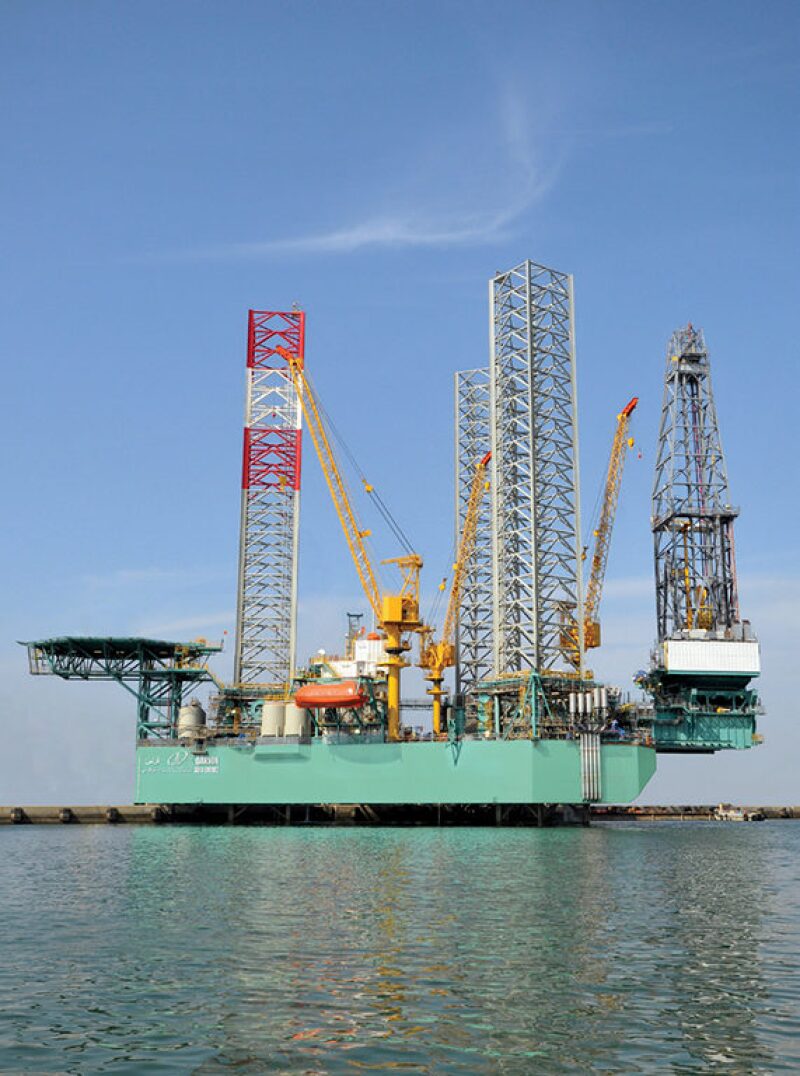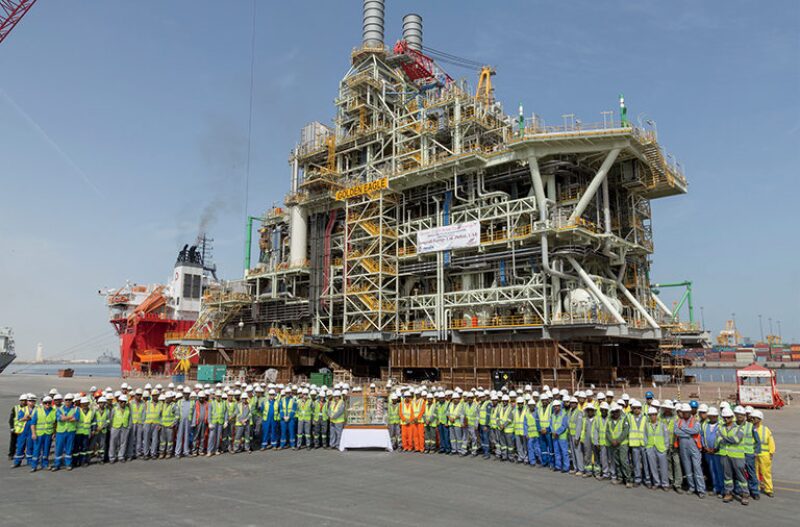
Jim Moffat, chief executive officer of UAE-based oil and gas construction and engineering group Lamprell, says offshore drilling rig construction in the Middle East is booming.What are your company’s main activities in the oil and gas industry and the region?
Lamprell, based in the United Arab Emirates (UAE) and with operations throughout the region, has played a prominent role in the development of the energy industry in the Middle East for more than 35 years and is the regional market leader in the rig construction business. Lamprell is a leading provider of diversified engineering and contracting services to the onshore and offshore oil and gas and renewable energy industries and, since its initial public offering in 2006, it has established leading market positions in the construction of shallow-water drilling jackup rigs, liftboats, land rigs and rig refurbishment, as well as an international reputation for complex onshore and offshore process modules and topsides. Lamprell employs approximately 10,000 people across multiple facilities, with its primary facilities located in Hamriyah, Sharjah, and Jebel Ali, all of which are in the UAE. In addition, the group has facilities in Saudi Arabia through a joint venture agreement and Kuwait.
What major operations are you are currently involved in?
So far in 2014, we have delivered five major projects, namely the NDC3 jackup rig Qarnin (to the National Drilling Company); Nexen Petroleum’s production, utilities, and quarters deck for the Golden Eagle Area Development in the North Sea; the NDC4 Marawwah jackup rig; the Seajacks Hydra jackup vessel; and, most recently, the Millennium Offshore Services’ major rig refurbishment project. We still have the Leighton and Jalilah B offshore construction projects to deliver in the third quarter of this year as well as the EDC2 (to the Eurasia Drilling Company) and NDC5 newbuild jackups in the fourth quarter. We also currently have eight rig refurbishment projects, all of which will be delivered in 2014 to suit client’s operating schedules.
This year also saw us win multiple contract awards with Ensco and Shelf Drilling. The Ensco award is for the construction and delivery of two high-specification, LeTourneau-designed, self-elevating mobile offshore drilling platforms of a Super 116E (Enhanced) Class. Delivery of the first rig to Ensco is scheduled to take place in Q2 2016 with the second rig being delivered in the third quarter of 2016. Under the contract terms, Ensco also has options for Lamprell to build two more jackup rigs of the same design. These options are exercisable within a period of 6 months from the effective date of the contract. We have had rig refurbishment contracts with Ensco before, but this is the first time we received a contract award for a newbuild so we are very pleased with this milestone.
The contract award with Shelf Drilling is for the construction and delivery of two high-specification, LeTourneau-designed, self-elevating Mobile Offshore Drilling Platforms of a Super 116E (Enhanced) Class. Lamprell is scheduled to deliver the first rig in Q3 2016, while the second rig is expected to be delivered in the second quarter of 2017.
In June, we won a new contract award from Petrofac Emirates for the fabrication and delivery of 29 modules. The modules are being constructed for use in connection with the Zakum Development Company (Zadco) landmark Upper Zakum, UZ750 (EPC-2) field development in Abu Dhabi.
Lamprell broke the world record for heaviest load moved by self-propelled modular trailers. Can you elaborate?
We announced the completion and delivery of a production, utilities, and quarters deck for the Golden Eagle Area Development in the North Sea to our client Nexen Petroleum in April this year and, around the same time, the Guinness Book of World Records confirmed that the load out movement of that offshore platform is the “heaviest load moved by self-propelled modular trailers,” measured at 13,191.98 tonnes. Although we have loaded out similar structures in the past, this is the largest offshore platform officially recognized and constructed by Lamprell.
Compared with other regions around the world, how would you describe the demand for floating, production, and storage offloading (FPSO) units in the Middle East?
The demand for FPSOs is not as high in the Middle East as it is in the North Sea, west Africa, and South America and there is a growing demand in the Asian market also. However, in terms of building FPSOs, we think that the Middle East offers a very attractive opportunity because of its geographical location. We are closer to Africa and South America, making the cost and duration of travel less, for example, and we also operate in closer time zones to places like London and Houston, where many client head offices are located. Middle East yards can also offer a competitive solution in line with many of the Far Eastern yards who have a history of building these products.

Lamprell produced a number of complex modules and turrets for several high-profile FPSO projects and opened the eyes of the energy sector to the industrial capabilities resident in the emirates back in the late 1990s. This loosened the virtual lock that the shipyard and subcontractor network in Singapore and South Korea had on offshore fabrication and opened the door for other Gulf area yards to get a piece of the offshore construction market. We completed a number of topsides for FPSOs as recently as 4 years ago, and we think that although the focus of delivery is still heavily Asian-based, under the right circumstances, we would see ourselves as a very valuable option for enlightened customers. Over the coming years, I would like to broaden our offering back into FPSOs; we have built modules for nine FPSOs since 2006 and have a lot to offer that market. We also have a very credible offering for the North Sea arena. We have built subsea products before and, because we are recognized as representing exceptional quality, have a potential niche market there. Of the nine FPSO topside projects that we have delivered, 95% of them are operational in west Africa and India, the balance in Australasia and Latin America. Our modular deliveries include delivery to yards in Asia as well as the UAE for integration into the converted hull.

What is your market share in the Middle East and the rest of the world?
Our Middle East market share of newbuild jackup drilling rigs today is 100%, Lamprell and Maritime Industrial Services (acquired by Lamprell in 2011) being the only yards in the region to have successfully built and delivered newbuild jackup drilling rigs. There are 140 jackups ordered and/or under construction in the rest of the world today, so with our nine, we have roughly a 6.5% market share at present. Recent reports, however, indicate that some of the China projects, included in the 140 above, are possibly not getting off the ground.

Who are your major clients?
Lamprell has a diverse international clientele representative of the oil and gas operator and drilling community, and we pride ourselves on our ability to service the needs of our returning clientele. Our relationship with national oil companies (NOCs) is mostly indirect at present in that we are a subcontractor to a prime contractor, who in turn is contracting with NOCs in the region.
We provide products and services that NOCs require. We are building minimum facilities platforms for Dubai Petroleum through a fabrication contract with Technip. We are constructing a facilities deck and topside plus the requisite jackets for South Oil Company Iraq via a fabrication contract with Leighton Offshore, and we provide maintenance and upgrade services to ENOC at their refinery facilities in the UAE. We are also performing module fabrication work with Petrofac for Zadco. We are however looking to enhance our regional relationships with the NOCs going forward given the volume of planned fabrication and upgrade here in the UAE region. Our major clients include NDC, Seajacks, Nexen, Maritime Offshore Services, ConocoPhillips, Petrofac, Noble, Rowan, Ensco, and Shelf.
What are the biggest challenges facing your company?
Following the management restructuring, we have gone through business process mapping in order to align processes and procedures. We are currently going through the system development phase that will automate the implementation of the new processes, which will lead to improvements in accuracy of our data across the organization as well as in our efficiency and profitability. This project involves all functions and will require the development of a new system technology that will ensure seamless and accurate transfer of one-time only data input from the design models to our material control, purchasing, production, inventory, and financial system. Projects of this size do come with teething problems; however, to date the operation has been a huge success through the continued efforts of the team working to roll this out. They have done an excellent job communicating the message to employees as well as providing training and 24/7 support, and I am confident that Phase 2 will also be successful.
What are your company’s current research and development priorities?
We have designed and developed our own intellectual property land rig, the Lamprell HP200. We are also working on Project Evolution, which involves a number of major studies about enhancing the technology provided in our facilities. Once implemented, these new processes will significantly improve efficiency in our yards.
What are the technology trends that you are looking forward to?
The use of new engineering technologies, such as intelligent modeling and analyses software, are set to improve quality, efficiency, and reduce clashes during construction. We are doing a pilot study on using laser scanning techniques, which can be converted into 3D models that will improve our design accuracy and reduce conflicts in our refurbishment projects. We are also looking at various changes in the welding technologies that we are currently using, we are planning on introducing the latest welding technologies to improve our efficiency while retaining the standards of quality that Lamprell has become synonymous with.
The skilled staffing shortage is a key issue facing some industry sectors. What are you doing to face this challenge?
One of our primary responses to combat skills shortages has been the establishment of a dedicated Assessment and Training Centre at our Sharjah facility. We have more than 75 trade skills and related training courses available at the center and we assess all incoming tradesmen and provide any necessary training. In addition, we are constantly enabling our workforce to gain exposure to new technologies and working methods to maintain their continuous development. An example of this includes initiatives that we are introducing to improve welding techniques and productivity.

